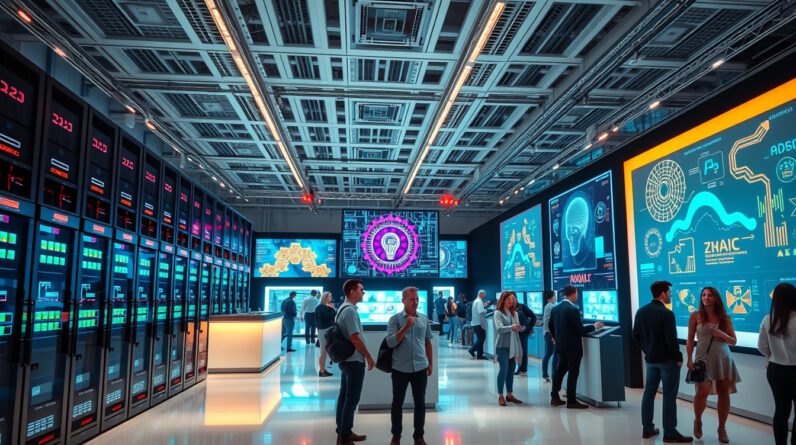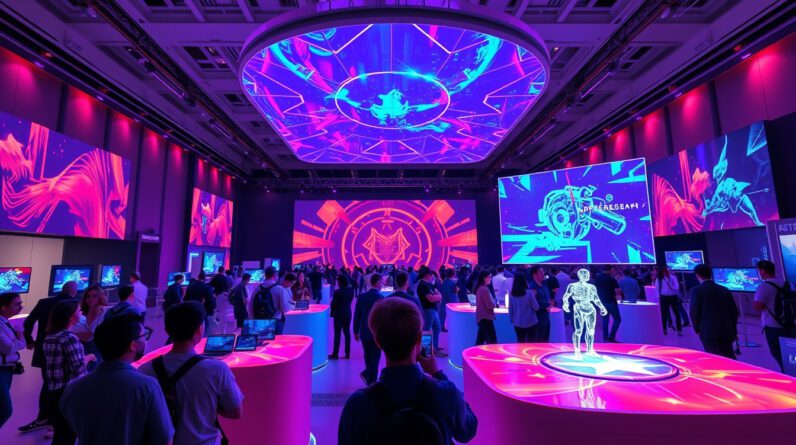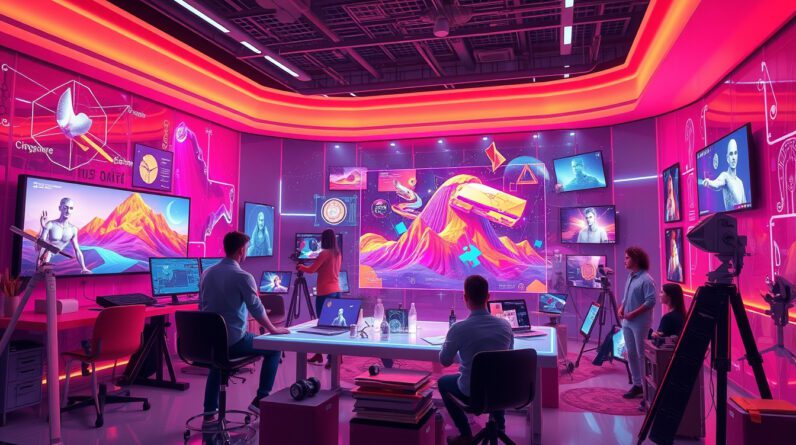
Nvidia, once primarily known for its advanced graphics processing units (GPUs) that powered high-end gaming and graphic-intensive applications, is boldly reinventing itself at the forefront of the artificial intelligence (AI) revolution. This transformation was prominently highlighted by CEO Jensen Huang during the recent GPU Technology Conference (GTC)
2023. The shift from a graphics chip-centric business to an AI infrastructure powerhouse signifies a dramatic change in Nvidia’s role within the tech landscape, positioning the company as a leader in the rapidly evolving field of AI. In this article, we will explore the major points from Huang’s keynote presentation, which outlines Nvidia’s strategy to build a comprehensive platform combining hardware and software for cloud and enterprise environments focused on AI-powered applications.

Takeaways
- Nvidia is transitioning from a graphics chip provider to a comprehensive AI infrastructure provider, focusing on hardware and software for cloud environments.
- The introduction of Nvidia Dynamo aims to optimize AI inference by efficiently managing GPU resources for organizations.
- Nvidia’s future plans include advanced hardware like Blackwell Ultra GPUs and strategic partnerships to bolster AI capabilities and infrastructure.
Nvidia’s Evolution into an AI Infrastructure Leader
Nvidia is undergoing a transformation that marks its emergence as a leading AI infrastructure provider, moving beyond its traditional role as a graphics chip manufacturer. During the recent GTC Conference, CEO Jensen Huang articulated this strategic pivot, emphasizing the company’s ambition to become an ‘intelligence manufacturer’. Central to Nvidia’s evolution is the development of a robust platform combining hardware and software tailored for cloud and enterprise environments, specifically designed for fast-tracking the development of AI-powered applications. As Huang pointed out, the demand for computing power is surging, driven by today’s AI inference processes, which are projected to require 100 times more resources than past methodologies. To facilitate this burgeoning need, Nvidia introduced ‘Nvidia Dynamo,’ a software tool that optimizes AI inference by dynamically managing GPU resources, enabling organizations to process a significantly higher volume of requests without additional hardware investments. Moreover, Nvidia outlined exciting developments in hardware, including the forthcoming ‘Blackwell Ultra’ GPUs and the ‘Vera Rubin’ architecture, aimed at pushing the boundaries of AI performance. Partnerships with industry leaders like Cisco further emphasize the company’s commitment to creating a cohesive AI infrastructure through improved networking solutions. This comprehensive strategy not only positions Nvidia at the forefront of innovation but also integrates its initiatives in autonomous vehicles and robotics, showcasing the cyclical relationship between AI infrastructure and cutting-edge technological advancements. As Nvidia navigates an increasingly competitive landscape, its expansive vision holds substantial promise for driving growth in the thriving AI market.
Innovative Technologies and Collaborations Shaping the Future
As Nvidia continues to elevate its status in the tech industry, its strategies pivot towards comprehensive AI infrastructure and enhanced collaboration. One of the most compelling elements of CEO Jensen Huang’s presentation at the GTC Conference was the emphasis on the synergy between AI technology and traditional sectors. By positioning itself as a pivotal player in the AI landscape, Nvidia is not just augmenting its hardware production; it is redefining entire ecosystems through innovative software and partnerships. The introduction of the ‘Nvidia Dynamo’ tool is a prime example of how the company plans to transform resource management in AI factories, allowing enterprises to significantly increase their operational efficiency without incurring additional hardware costs. This platform-centric approach highlights Nvidia’s understanding of market demands and its proactive measures to cater to the growing need for AI capabilities. Furthermore, the exciting prospects of the ‘Blackwell Ultra’ GPUs and the ‘Vera Rubin’ architecture promise to push the boundaries of performance, essential for meeting the increasing computational requirements of the AI-driven future.




